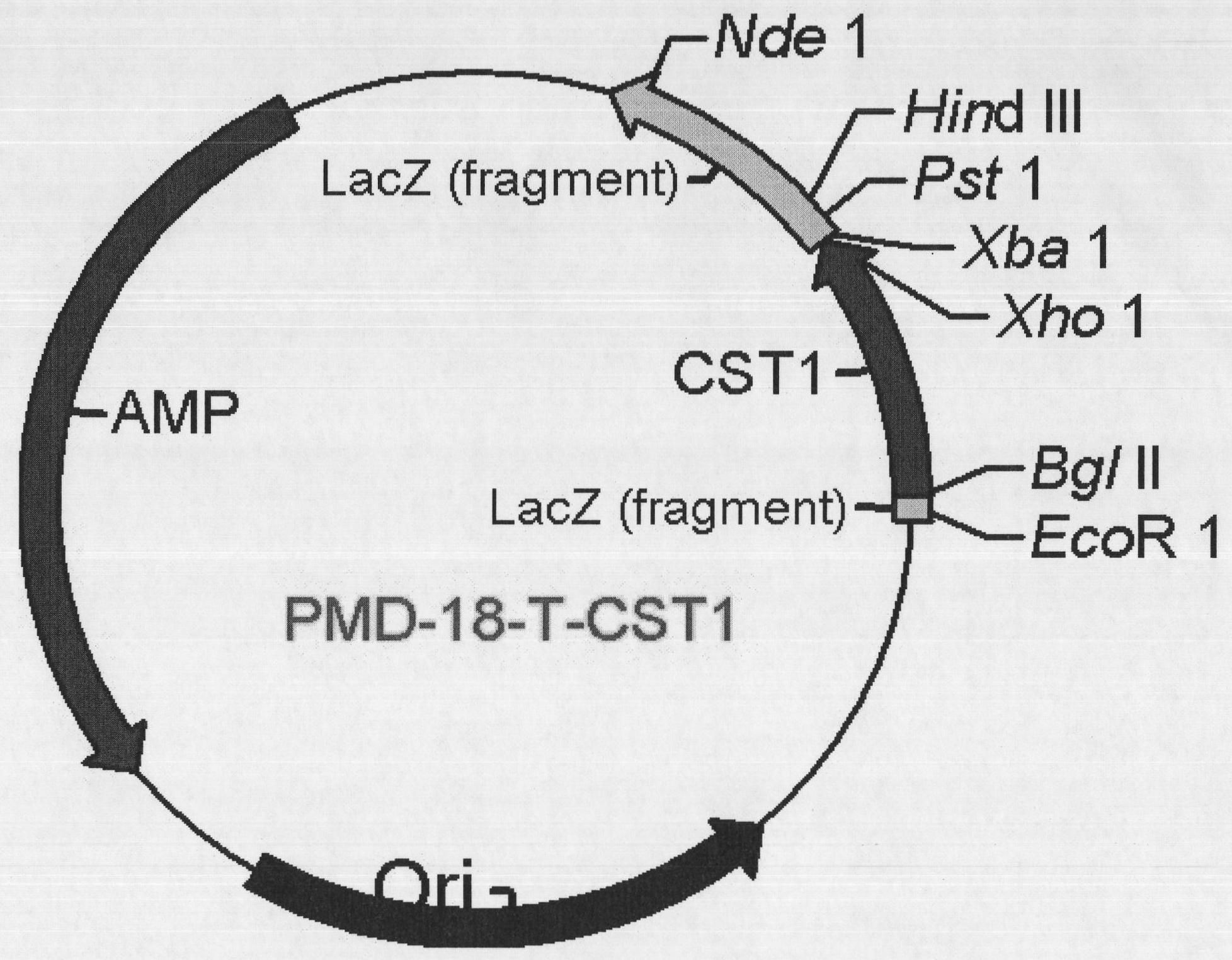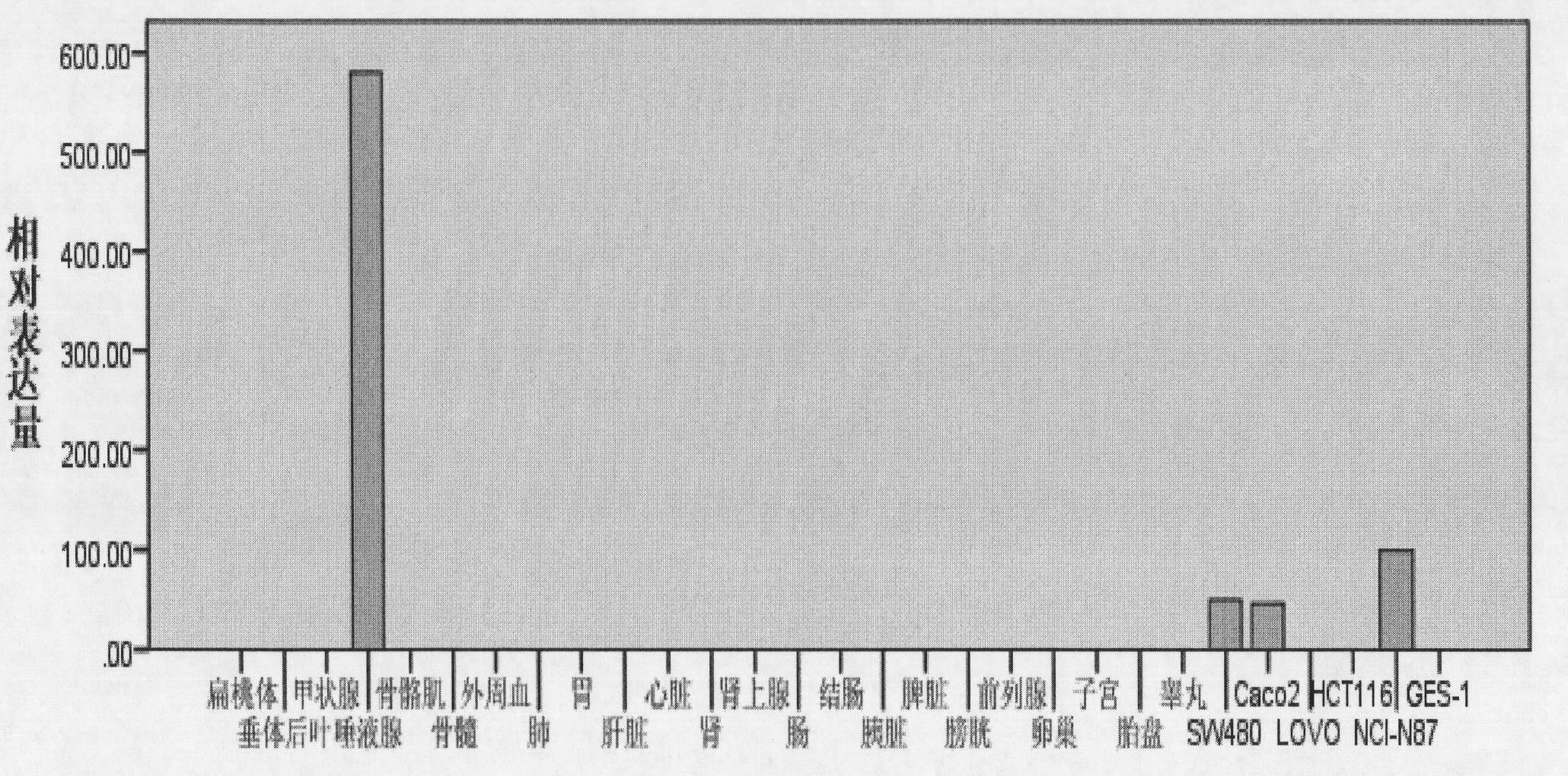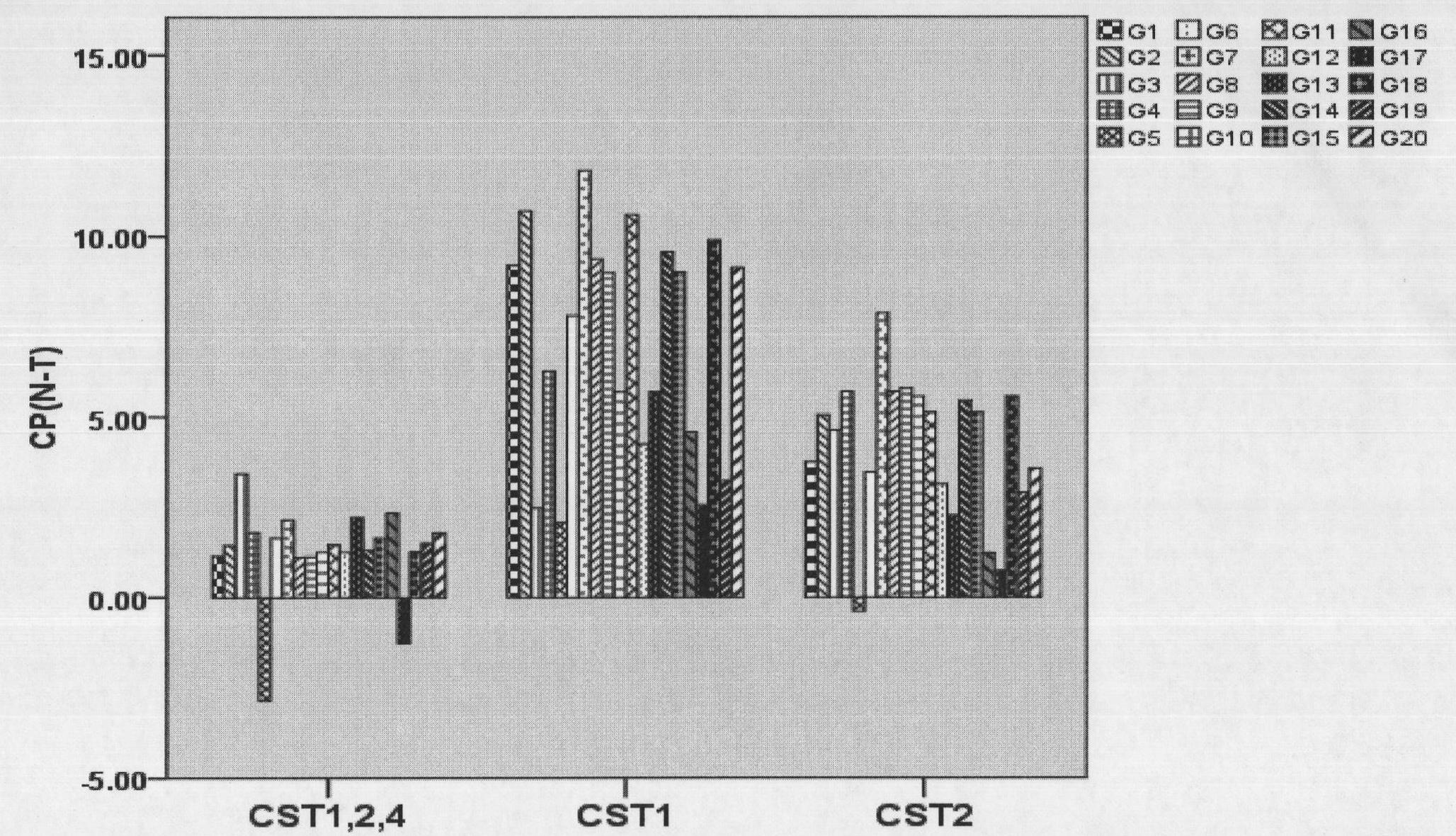New molecular marker for diagnosis and prediction of gastrointestinal tumor
A tumor and gastrointestinal technology, applied in the fields of biotechnology and medicine, can solve problems such as difficult early detection of gastrointestinal tumors
- Summary
- Abstract
- Description
- Claims
- Application Information
AI Technical Summary
Problems solved by technology
Method used
Image
Examples
Embodiment 1
[0116] Example 1. Differences in the expression of CST1 in different tissues of the human body
[0117] The human tissue samples used were purchased from commercial institutions except for the normal gastric mucosa and colonic mucosa which were collected by the inventor from the cooperative hospital. The nucleotide chip HG-U95Av of Affymetrix was used to compare the expression of CST1 mRNA in various normal tissues, and the operation process was referred to the product manual. The value of relative expression in this experiment is the normalized signal value after normalization by the fluorescence value of the housekeeping gene β-actin.
[0118] The result is as figure 2 As shown, except for the high expression of CST1 in the salivary gland, CST1 is not expressed in other tissues, indicating that the background value of CST1 mRNA expression in normal tissues is very low, which is extremely beneficial for the detection of CST1 under pathological conditions. It is overexpress...
Embodiment 2
[0119] Example 2. Comparison of CST1, CST1, 2, 4, and CST2 mRNA expression levels in gastric cancer and adjacent surgical tissue samples
[0120] By comparing the expression levels of CST1, CST1, 2, 4, and CST2 mRNA in 20 pairs (G1-G20) of gastric cancer and adjacent tissues, it was found that the expression of CST1 mRNA was the largest in gastric cancer and adjacent tissues. The results are shown in image 3 . All the above specimens passed the pathological proof, and real-time quantitative PCR was adopted by the dye method.
Embodiment 3
[0121] Example 3. Differences in the expression levels of the first splice mode (splice1) and the second splice mode (splice2) of CST1 in gastric cancer and paracancerous tissue samples
[0122] RNA extraction and reverse transcription of cDNA were carried out on the samples collected through surgery after pathological verification. Real-time quantitative PCR was used to detect the expression of the housekeeping gene ACTB in the samples, and it was found that the CP values in the ACTB samples were basically the same. Figure 4a, that is to say, the total amount of cDNA in the sample is basically the same, and then compared the CP of the first splice mode (splice1) and the second splice mode (splice2) of CST1 in 20 pairs of gastric cancer and paracancerous tissues The median of the difference between the value and cancer, see Figure 4b , found that the difference in the expression of the first splice mode of CST1 (splice1) between cancer and para-cancer was significantly bet...
PUM
 Login to View More
Login to View More Abstract
Description
Claims
Application Information
 Login to View More
Login to View More - Generate Ideas
- Intellectual Property
- Life Sciences
- Materials
- Tech Scout
- Unparalleled Data Quality
- Higher Quality Content
- 60% Fewer Hallucinations
Browse by: Latest US Patents, China's latest patents, Technical Efficacy Thesaurus, Application Domain, Technology Topic, Popular Technical Reports.
© 2025 PatSnap. All rights reserved.Legal|Privacy policy|Modern Slavery Act Transparency Statement|Sitemap|About US| Contact US: help@patsnap.com



